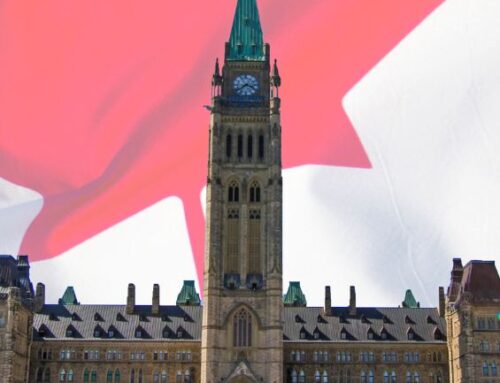Editor-in-chief Paul Tuns interviewed Against Judicial Activism author and Interim columnist Rory Leishman via e-mail
The Interim: What is judicial activism and how did it get started?
Rory Leishman: Judges engage in judicial activism when they presume to change the law from the bench, rather than exercise judicial restraint by fulfilling their sworn duty as judges to uphold the law as found in the common law, statute laws and the Constitution of Canada.
Prior to the 1980s, Canadian judges were loathe to indulge in judicial activism. Today, most appeal court judges know no such restraint. They are disposed to overturn the law whenever they see fit. Former chief justice Bora Laskin of the Supreme Court of Canada inaugurated this era of rampant judicial activism in Canadian courts with a dissenting opinion in Harrison v. Carswell, 1976 SCC, in which he suggested that the Supreme Court of Canada should unilaterally change the Manitoba Petty Trespass Act to allow picketing inside a shopping mall.
Mr. Justice Brian Dickson, as he then was, emphatically disagreed. Writing for the majority of the court in Carswell, he upheld the traditional doctrine of judicial restraint, saying: “If there is to be any change in this statute law, it would seem to me that such a change must be made by the enacting institution, the legislature, which is representative of the people and designed to manifest the political will, and not by the court.”
Alas, Dickson subsequently changed his mind. After succeeding Laskin as the chief justice of Canada in 1984, he became an even more enthusiastic and active proponent of judicial activism than was Laskin.
 TI: Why is judicial activism wrong? Why shouldn’t judges “legislate from the bench” to address what they view as society’s shortcomings?
TI: Why is judicial activism wrong? Why shouldn’t judges “legislate from the bench” to address what they view as society’s shortcomings?
RL: Judges have no authority or competence to exercise legislative powers. They lack the information, skills and experience to craft sound legislation. In R. v. Askov, 1990 SCC, the Supreme Court of Canada promulgated a new law requiring trials to begin within eight months after committal. Mr. Justice Peter Cory, who wrote the judgment for the court, later confessed that he was shocked by the disastrous results of his ruling. In Ontario alone, more than 40,000 criminal charges had to be dropped.
In R. v. Marshall, SCC 1999, the Supreme Court of Canada touched off one of the worst race riots in Canadian history, by allowing Miíkmaq Indians to fish out of season. In Singh v. the Queen, 1985 SCC, this same court undermined Canada’s national security, by changing the law to allow bogus refugee claimants to qualify for welfare payments and to remain in Canada for years while appealing deportation orders through the courts.
TI: What is the legacy of judicial activism? What policies are in place today because of judicial activism?
RL: This list is long. Here are a few prime examples. As a result of judicial activism, homosexuals can “marry” and adopt children; Christian printers can end up in jail for refusing on religious grounds to print materials for a gay activist organization; Christian teachers can be fired for expressing their views on gay “marriage” in public; perverts can legally engage in group sex in a place open to the public; and Canada has acquired the ignominious distinction of being the only democratic country in the world where abortionists can legally kill a perfectly healthy baby in the womb at any time during a pregnancy, even up to just seconds before birth.
TI: What is the most egregious example of judicial activism?
RL: I would nominate the 2003 Halpern ruling of the Ontario Court of Appeal, in which a three-judge panel unanimously changed the legal definition of marriage to include same-sex couples. In taking this action, the court flouted the expressed will of Parliament. In a resolution adopted on June 8, 1999, a solid majority of MPs affirmed: “It is necessary, in light of public debate around recent court decisions, to state that marriage is and should remain the union of one man and one woman to the exclusion of all others, and that Parliament will take all necessary steps within the jurisdiction of the Parliament of Canada to preserve this definition of marriage in Canada.”
TI: You include human rights tribunals in your book, but they are not courts, per se. Why include them in your general indictment of judicial activism?
RL: Adjudicators on human rights tribunals are no less prone than judicial activists to change, rather than uphold, the law. For example, in 1998, a human rights adjudicator in Quebec decreed that a trans-sexual man who thinks of himself as a woman trapped in a man’s body qualifies in law as a woman, even if he has not undergone a sex-change operation. Following this precedent, the British Columbia Human Rights Tribunal held in a 1999 case that a nightclub in Victoria must pay $2,000 in damages to a cross-dressing man, because a club bouncer had refused to allow him to use the women’s washroom.
By such rulings, human rights adjudicators have proceeded with the approval of the courts to create legal rights for trans-sexuals, as well as gays, lesbians and bi-sexuals.
TI: Opponents of conservative critics of “legislating from the bench” say that charges of judicial activism are little more than sour grapes, because typically the liberal side is winning in court. Is that true?
RL: Opposition to judicial activism is a matter of principle, not just sour grapes. Would liberals support judicial lawmaking if the Supreme Court of Canada were packed with conservatives instead of liberals and socialists? Most certainly not. Most left-wingers were appalled last year when the Supreme Court of Canada arbitrarily decided in R. v. Chaoulli to impose two-tier medicare on Quebec.
All Canadians – conservatives, liberals and socialists – should prefer democracy to dictatorship, even a dictatorship of judges. Government of the people, by the people and for the people might be messy and prone to error, but it’s a lot better than any government by an unelected and unaccountable judicial elite.
Abraham Lincoln was a staunch opponent of judicial activism. He much preferred democracy to judicial rule. In discussing this issue in his magnificent first inaugural address, he asked: “Why should there not be a patient confidence in the ultimate justice of the people? Is there any better or equal hope in the world?”
TI: How do we fix the problem of judicial activism? Can we “turn back the clock” or have we reached a point where reform of the courts (and tribunals) is merely a dream?
RL: Canadians can take hope from developments south of the border. For most of the past 50 years, unabashed judicial activists have held sway on the United States Supreme Court. Today, thanks to two astute appointments by President George W. Bush, there are four proponents of judicial restraint on this court. It would take just one more good Supreme Court appointment by Bush or a like-minded successor to curb the propensity of judicial activists in the United States to usurp legislative powers and subvert the rule of law.
With inspired political leadership, Parliament and the provincial legislatures could do the same for Canada. They, too, could effectively suppress the urge of rogue judges to legislate from the bench. But first, most of us Canadians will have to awaken to the dangers posed by judicial activism. And we had better do so soon. No Canadian can be safe from the tyranny of arrogant judges and human rights adjudicators who are allowed to get away with imposing their arbitrary will on the law..




